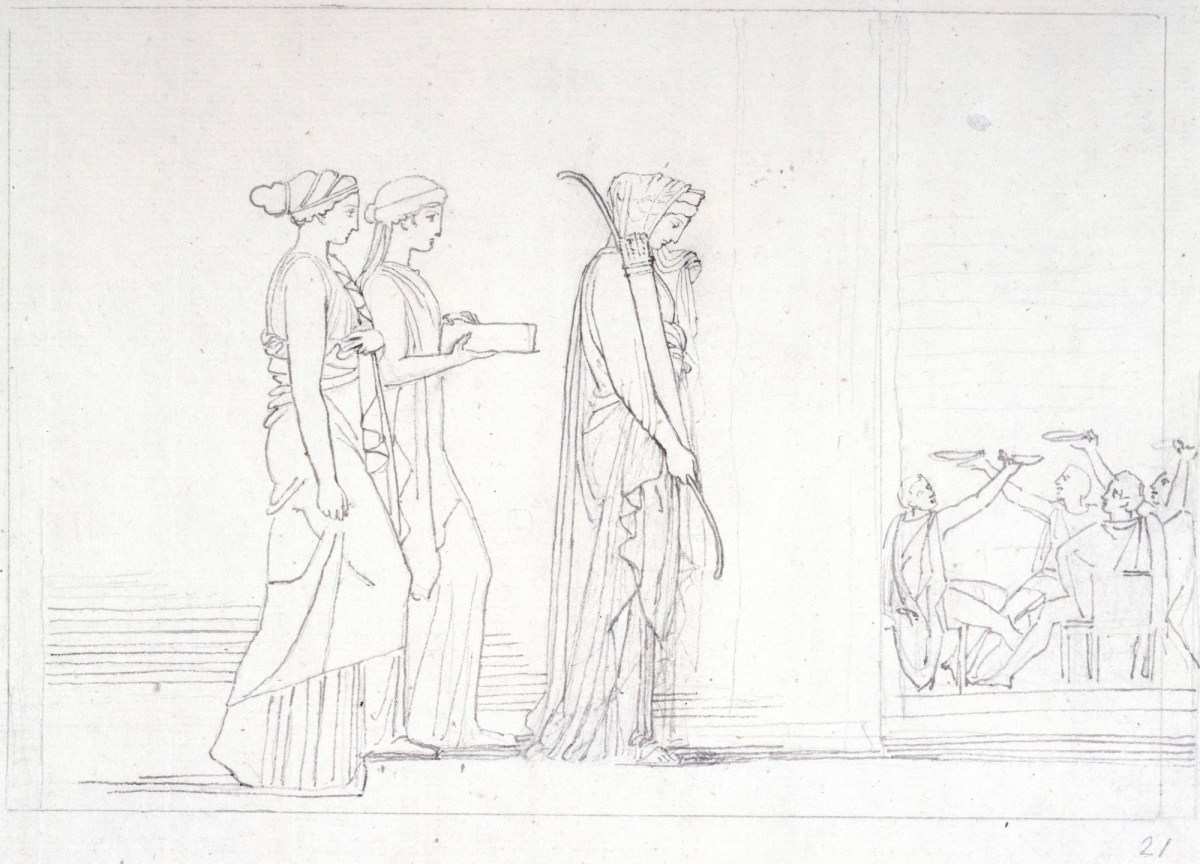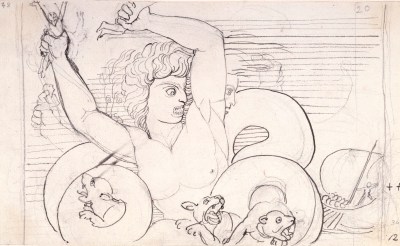
John Flaxman RA, Penelope Carrying the Bow of Ulysses to the Suitors, 1792-3.
Pencil, pen and ink on light grey laid paper. 235 mm x 275 mm. © Photo: Royal Academy of Arts, London. Photographer: John Hammond.
This image is not available to download. To licence this image for commercial purposes, contact our Picture Library at picturelibrary@royalacademy.org.uk
Penelope Carrying the Bow of Ulysses to the Suitors, 1792-3
John Flaxman RA (1755 - 1826)
RA Collection: Art
Flaxman was commissioned to illustrate both The Odyssey and The Iliad by Georgiana Hare-Naylor while he was living in Rome. His patron paid fifteen shillings for each drawing and it has been suggested that the motive behind the whole commission was to support Flaxman financially so that he was able to remain in Rome.
Flaxman began work on the drawings in December 1792 and was still occupied with this project in September the following year when he wrote to the painter George Romney that 'my employments at present are, finishing Lord Bristol's great group in marble, making a model for a restoration of the Apollo Belvidere [sic], and, in the evenings, making a series of drawings from Homer and Dante...which are engraving (i.e. which are to be engraved)'. In a letter to the writer William Hayley, dated October 1793, Flaxman also described his ambitions for the project; 'my view does not terminate in giving a few outlines to the world; my intention is to shew how any story may be represented in a series of compositions on principles of the antients, of which I intend to give specimens in Sculpture of different kinds, in groups of basrelieves, suited to all the purposes of Sacred and Civil Architecture'.
The bas-reliefs were never executed but Flaxman's drawings for both The Odyssey and The Iliad were engraved and widely disseminated. They were first engraved and published in Italy by Piroli in 1793. Two years later the plates for The Iliad were published in London but the set of illustrations to The Odyssey which Piroli sent to London never reached their destination. In 1805, the publishers Longman, Hurst, Rees and Orme printed new editions of both series, including six extra illustrations commissioned from Flaxman. The group of drawings in the Academy collection does not constitute a full set.
Object details
235 mm x 275 mm
Start exploring the RA Collection
- Explore art works, paint-smeared palettes, scribbled letters and more...
- Artists and architects have run the RA for 250 years.
Our Collection is a record of them.



